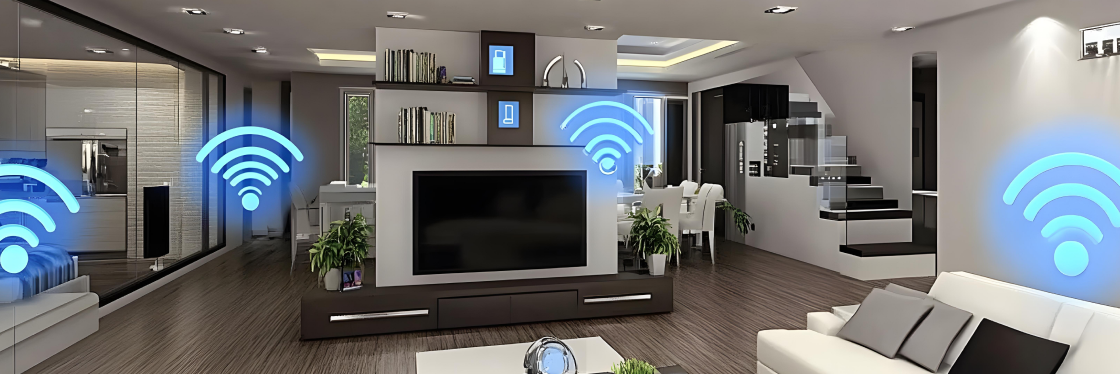Wireless Home Automation: Smart Ways to Save Power at Home
Table of Contents
- 1. What Is Wireless Home Automation?
- 2. Top Benefits of Wireless Smart Homes
- 3. How Wireless Automation Saves Power
- 4. Key Devices and Features for Energy Savings
- 5. Actionable Tips for Setting Up a Wireless Smart Home
- 6. Pros & Cons: Wireless vs. Wired Automation
- 7. Conclusion: A Smarter, Greener Home
- 8. FAQs
What Is Wireless Home Automation?
Wireless home automation lets you control home devices—like lights, fans, and appliances—using your phone or voice assistants such as Alexa or Google Assistant. All devices connect through Wi-Fi or other wireless tech, so there’s no need to rewire your home. It’s user-friendly, flexible, and perfect for beginners.
Top Benefits of Wireless Smart Homes
Easy Control: Adjust lighting, temperature, and devices with one tap or voice command—even from outside your home.
Added Security: Get instant alerts about unusual activity or open doors and windows.
Convenience: Set routines (like “Night Mode”) to automate common tasks.
Easy to Install: Most gadgets just plug in or connect by app—no drilling or rewiring needed.
Scalable: Start with a few devices and add more anytime.
How Wireless Automation Saves Power
Wireless smart tech helps cut electricity use and reduce wastage. Here’s how:
1. Automated Scheduling
Lights & Appliances: Set timers for lights and devices to switch off automatically if you forget.
“Away Mode”: All non-essential devices turn off when you leave home.
2. Smart Sensing
Motion Sensors: Lights and fans operate only when someone is in a room, avoiding unnecessary use.
Occupancy Sensors: Air conditioning and heaters adjust based on room occupancy.
3. Real-Time Monitoring
Track Usage: See exactly how much energy each device uses via smart plugs or phone apps, helping spot and fix waste quickly.
Energy Reports: Some systems give tips to optimize your usage patterns.
4. AI & Eco Modes
Adaptive Control: Thermostats and lights change automatically based on time of day, outside temperature, or sunlight—using less energy with no extra effort.
Curtain Controllers: Open or close blinds to use more natural light and limit heat or cooling needs.
Key Devices and Features for Energy Savings
Smart Plugs: Remotely turn devices on/off or check their energy use.
Smart Thermostats: Adjust temperatures based on your habits, saving up to 12% on energy bills.
Motion Sensor Lights: Only light rooms when needed, perfect for hallways and bathrooms.
Automated Curtains/Blinds: Let in sunlight or block heat as needed.
Central Control Apps: Manage everything from a single dashboard.
Actionable Tips for Setting Up a Wireless Smart Home
Start Small: Begin with one or two smart plugs or bulbs in rooms you use most.
Use Routines: Set up schedules like “Goodnight” to shut off non-essential devices at bedtime.
Monitor Usage: Regularly check usage stats and update schedules for best results.
Combine Devices: Link smart sensors, lights, and thermostats to maximize savings without extra effort.
Stay Secure: Use strong Wi-Fi passwords and keep device firmware updated to protect your home.
Pros & Cons: Wireless vs. Wired Automation
| Feature | Wireless Automation | Wired Automation |
|---|---|---|
| Installation | Simple, no new wiring needed | Complex, wiring required |
| Flexibility | Easy to expand with new devices | Hard to scale |
| Mobility | Devices movable anywhere | Fixed in place |
| Initial Cost | Lower for a basic setup | Higher upfront |
| Security | May be interrupted by Wi-Fi issues, but improving | Very secure due to physical connections |
| Control | Remote (app/voice) | Usually in-house panels |
Conclusion: A Smarter, Greener Home
Switching to wireless home automation is a practical step toward a greener future. It cuts down on wasted power, brings comfort, and gives you more control—without needing to be a tech expert. With smart schedules, sensors, and monitoring, you’ll notice the benefits in both your lifestyle and your electricity bill.
FAQ
1. Do I need Wi-Fi for wireless home automation?
Yes, most wireless devices use Wi-Fi or Bluetooth to connect and communicate with your home network.
2. How much can I save on electricity bills?
Studies show that smart thermostats can save up to 12% and smart lights 30-40%. Total savings depend on your usage and how many devices you automate.
3. Is wireless home automation safe from hacking?
Today’s systems use encryption and regular updates to keep your network secure. Always use strong passwords and keep devices updated.
4. Can I install devices myself?
Most wireless devices are plug-and-play and come with easy-to-follow instructions—no professional needed.
5. Will automation work during power cuts?
Devices need electricity to operate, but many return to schedules automatically when power is restored.
